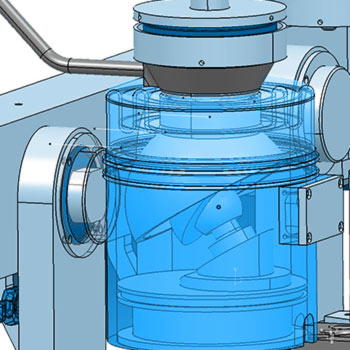ASTM F3047M: Standard Guide for High Demand Hip Simulator Wear Testing of Hard-on-hard Articulations
Wear testing of hard-on-hard Total Hip Replacement (THR) systems is commonly conducted according to ISO 14242-1, with the components placed at the intended cup inclination and simulation of normal walking gait. The objective of ASTM F3047M is to demonstrate potential high-demand wear test features, including high cup inclination, edge loading, third-body wear, and microseparation. High-demand hip wear testing can be performed using the EndoLab® hip joint simulator. The image shows a cup positioned with a high cup inclination angle.


